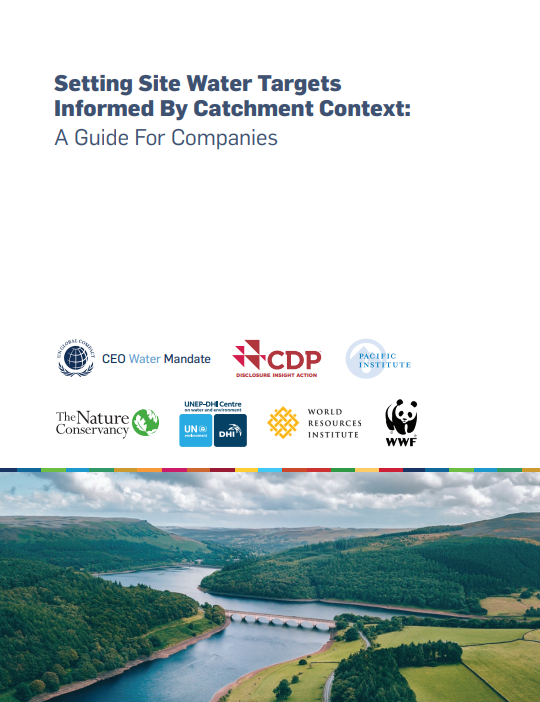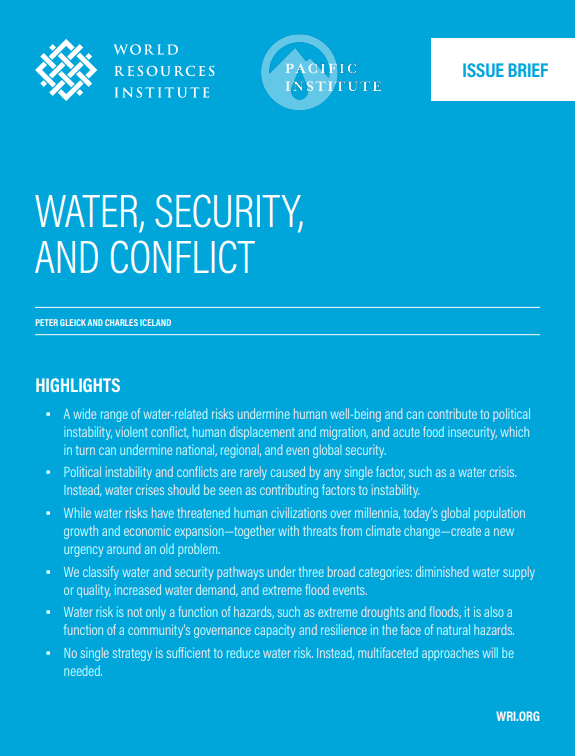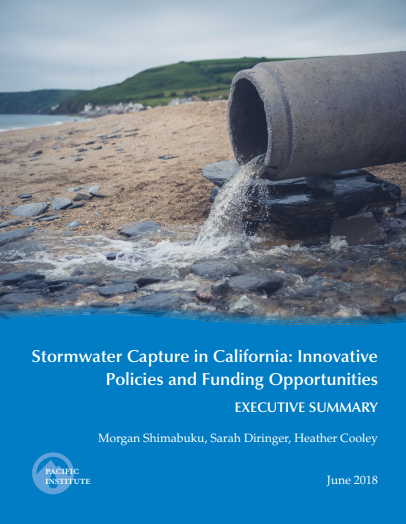1054 Resources

State of the Salton Sea – A Science and Monitoring Meeting of Scientists for the Salton Sea
January 30, 2017 | publication
California’s Salton Sea is an ecosystem facing large systemic changes in the near future.
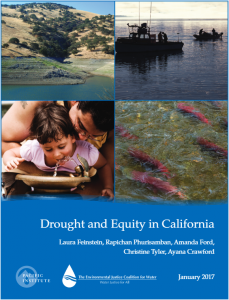
Drought and Equity in California
January 13, 2017 | publication
California’s climate is prone to prolonged periods of drought that are exacerbated by the effects of climate change.
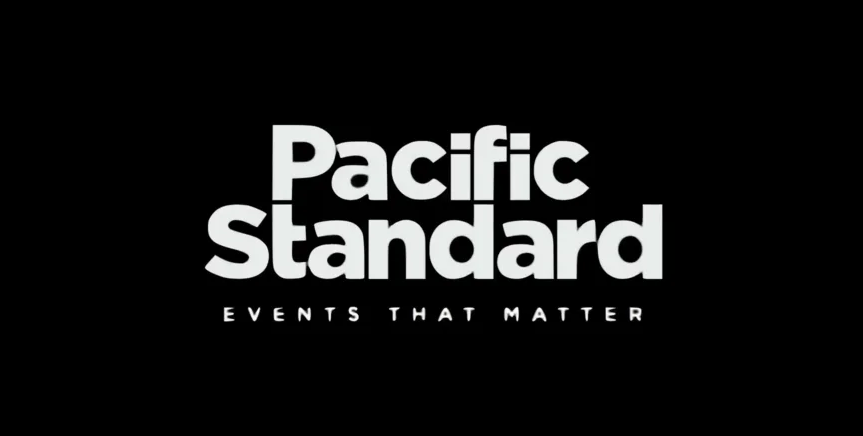


National Geographic ScienceBlogs: From Scientists to Policymakers: Communicating on Climate, Scientific Integrity, and More
December 5, 2016 | post
Among the different professional categories, scientists and engineers remain very highly respected by the public, at least compared to politicians, business leaders, the media, and even religious authorities.

Water Strategies for the Next Administration: New Major U.S. Water Policy Recommendations
November 6, 2016 | publication
This document identifies major water-related challenges facing the United States and offers explicit recommendations for strategies the next administration and Congress should pursue, domestically and internationally.
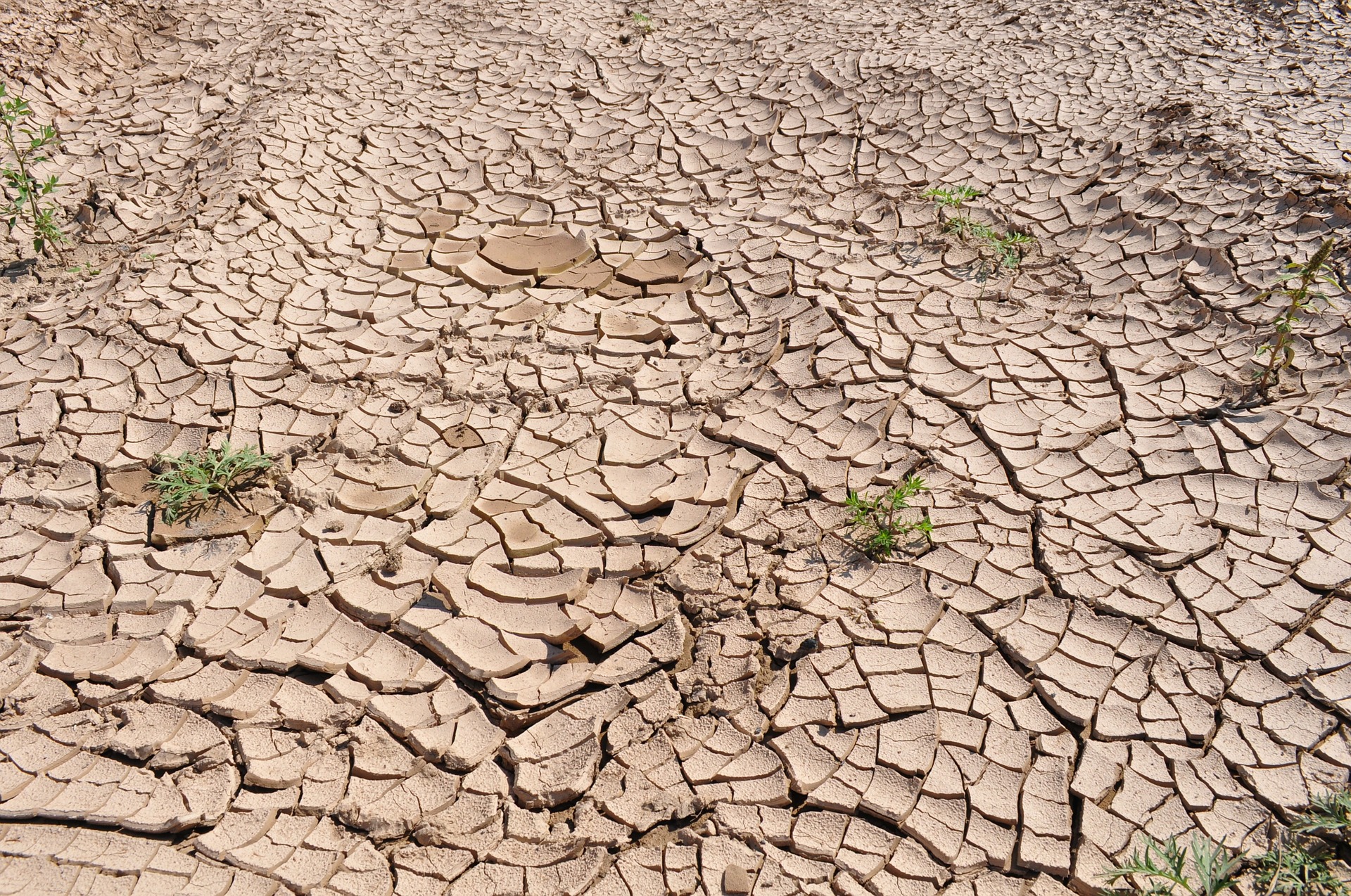

The Cost of Alternative Water Supply and Efficiency Options in California
October 12, 2016 | publication
This report is the first comparative analysis of water supply and demand management strategies for localities in the State of California.

Meeting Sustainability Goals: Voluntary Sustainability Standards and the Role of the Government
October 3, 2016 | publication
Voluntary Sustainability Standards (VSS) have emerged in the past two decades as standards specifying requirements relating to a wide range of sustainability metrics, including respect for human rights, workers’ health and safety, decent income, environmental degradation, and others.
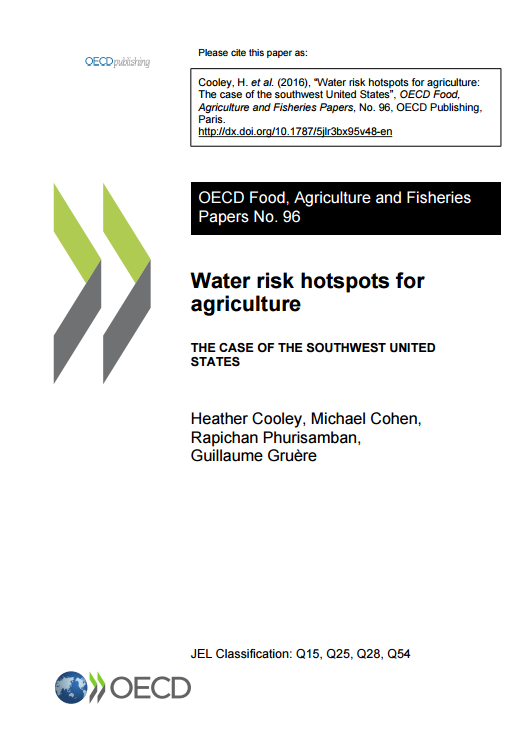
Water Risk Hotspots for Agriculture: The Case of the Southwest United States
September 27, 2016 | publication
Despite being the United States’ most arid region, the US Southwest – Arizona, California, Colorado, Nevada, New Mexico, and Utah – is one of the most productive agricultural regions in the world. Yet nearly 75% of total cropland in the region, and an even higher percentage of total agricultural productivity, depends on supplemental irrigation.

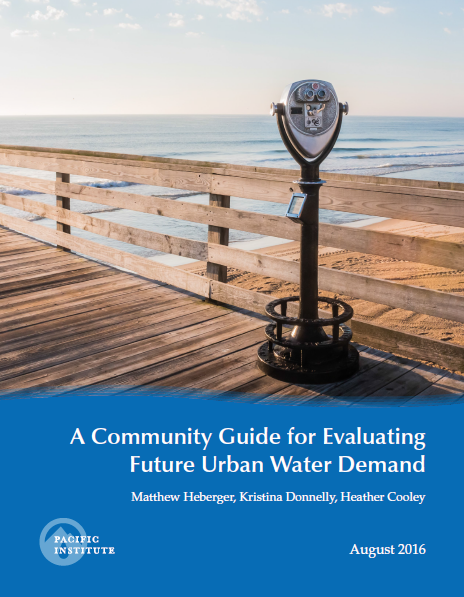
A Community Guide for Evaluating Future Urban Water Demand
August 31, 2016 | publication
A Community Guide for Evaluating Future Urban Water Demand provides communities, environmental groups, ratepayer advocates, and anyone interested in sustainable water supply planning with the knowledge and tools they need to understand water demand forecasts.

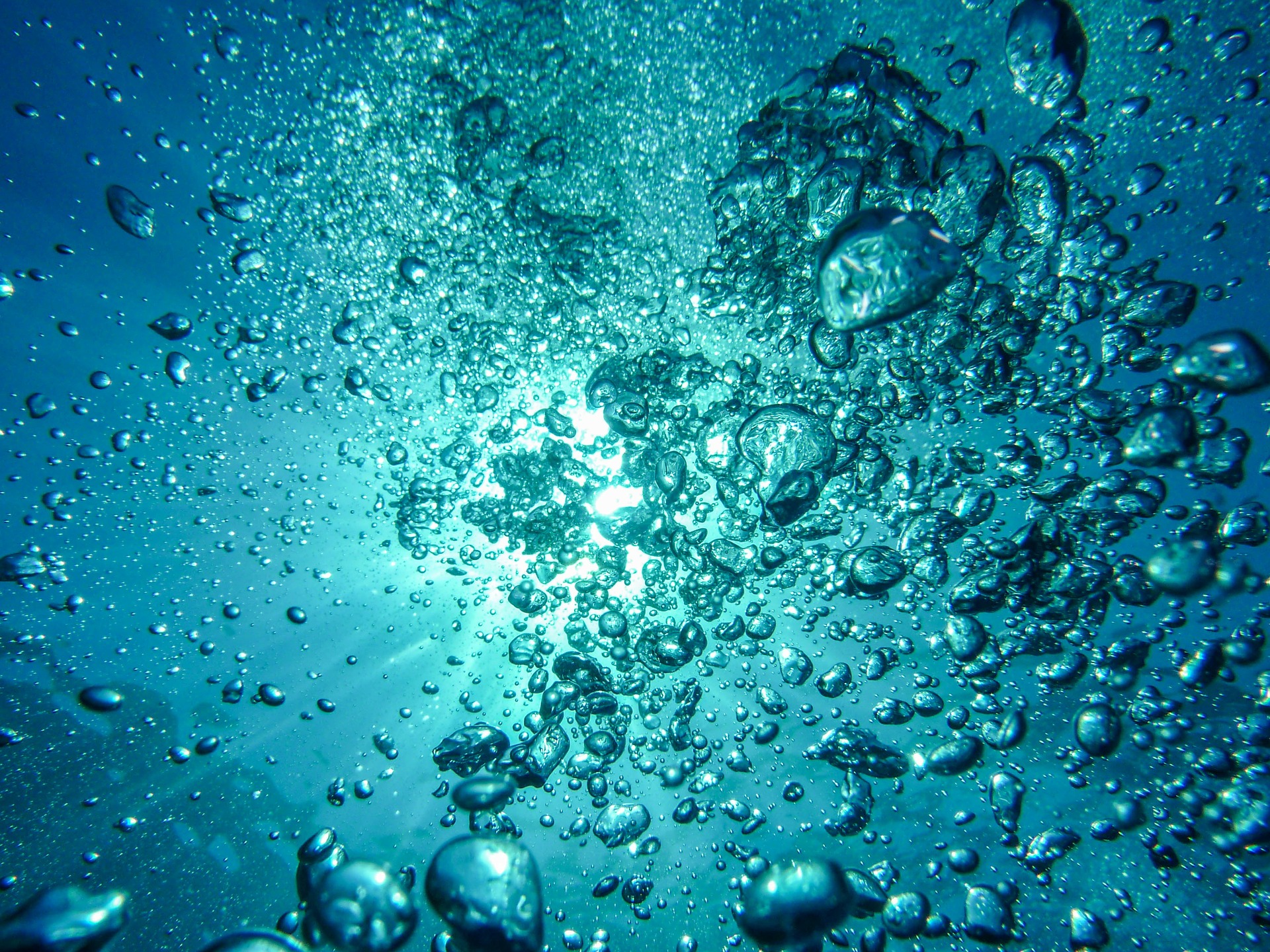
ERW Opinion: On Methods for Assessing Water-Resource Risks and Vulnerabilities
August 3, 2016 | post
As populations and economies continue to expand and as anthropogenic climate change accelerates, pressures on regional freshwater resources are also growing.

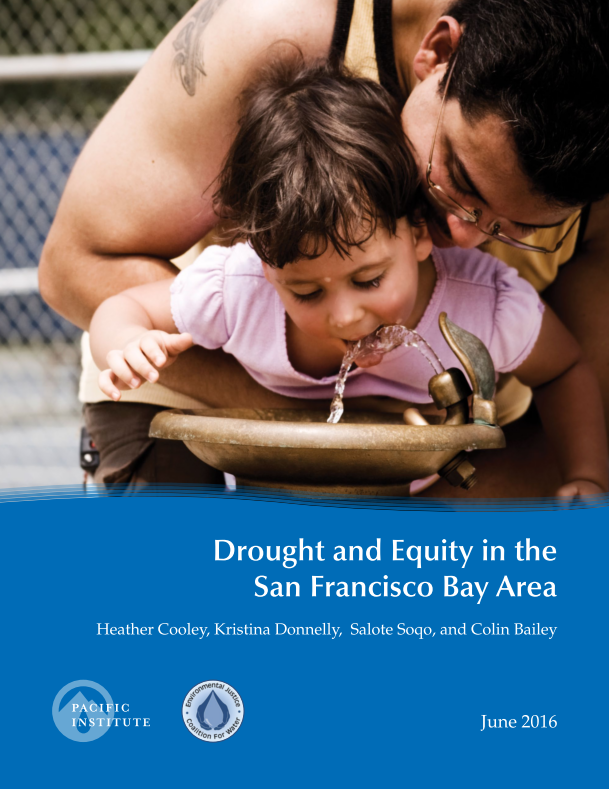
Drought and Equity in the San Francisco Bay Area
June 29, 2016 | publication
The most severe drought in California on the instrumental record stretched from 2012-2016. The drought was highly publicized, with particular attention paid towards impacts on agriculture, urban areas, and ecosystems. Little attention, however, was paid to the drought’s impacts on California’s low-income communities.

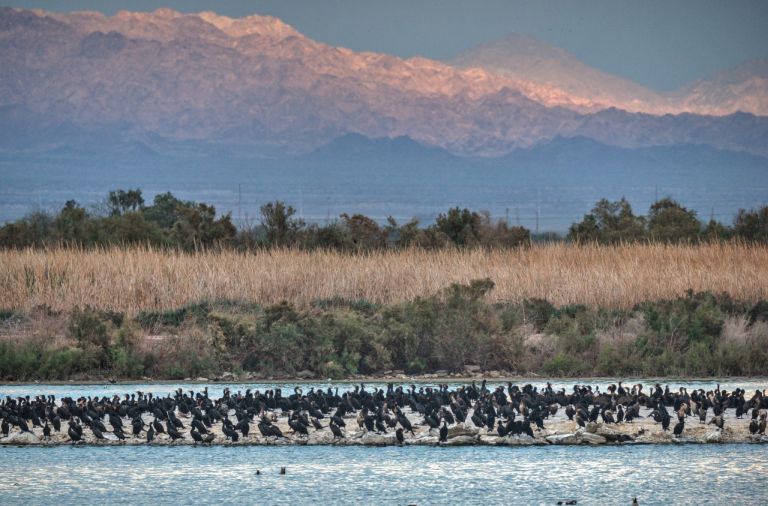


Huffpost Green: An Open Letter From Peter Gleick: My Transition at the Pacific Institute
March 28, 2016 | post
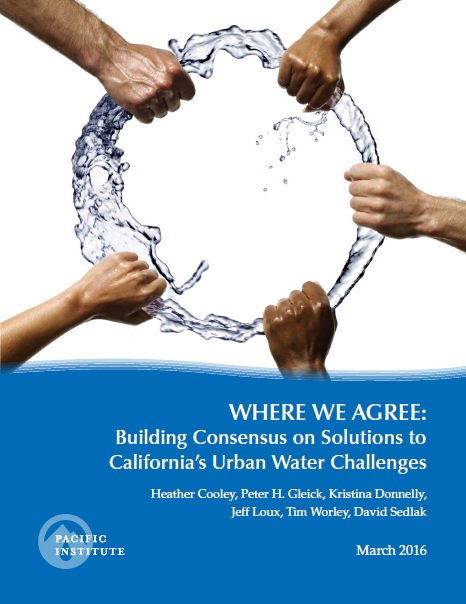
Where We Agree: Building Consensus on Solutions to California’s Urban Water Challenges
March 9, 2016 | publication
California has a long list of unresolved and difficult water challenges, made more urgent by periods of severe drought that are exacerbated by climate change.
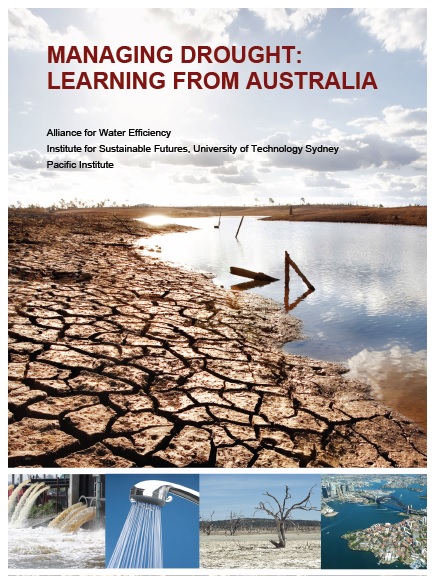
Managing Drought: Learning from Australia
February 25, 2016 | publication
A new report released today shows that strategies developed and mistakes made during Australia’s decade-long Millennium Drought provide a powerful resource for California, as the state enters its fifth year of severe drought.
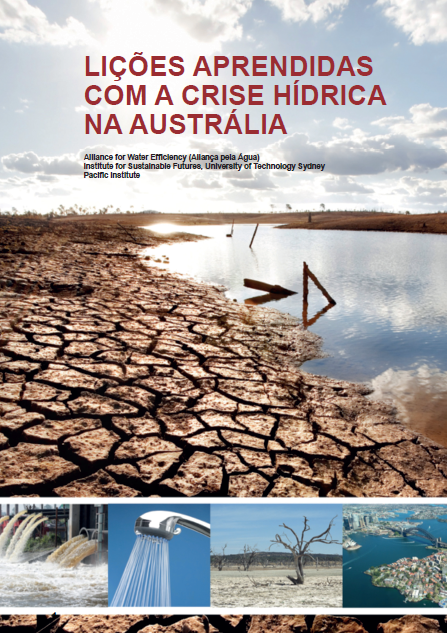
LIÇÕES APRENDIDAS COM A CRISE HÍDRICA NA AUSTRÁLIA
February 25, 2016 | publication
Realizado pela Alliance for Water Efficiency (Chicago, EUA), pelo Institute for Sustainable Futures, da Universidade de Tecnologia de Sidney (Sidney, AUS) e pelo think tank Pacific Institute, ”Managing the Drought” busca identificar as estratégias que as companhias de águas urbanas e agências de águas da Austrália adotaram para sobreviver à pior seca já registrada em sua história – a ”Seca do Milênio”, que durou de 1997 até seu término oficial, em 2012.

National Geographic ScienceBlogs: Water, Security, and Conflict: Violence over Water in 2015
February 17, 2016 | post
Since its founding in 1987, the Pacific Institute has worked to understand the links between water resources, environmental issues, and international security and conflict.
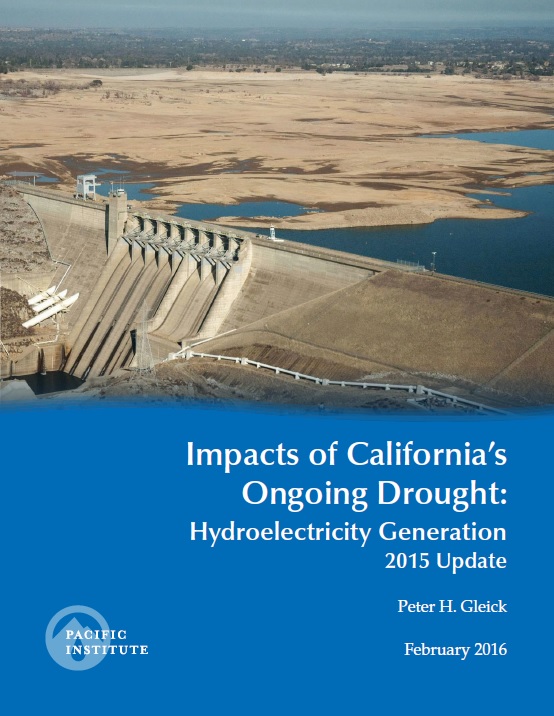
Impacts of California’s Ongoing Drought: Hydroelectricity Generation 2015 Update
February 9, 2016 | publication
Hydropower and natural gas are the principal sources of electricity for California’s millions of users.
Page 22 of 43



